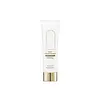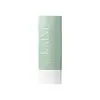What's inside
What's inside
 Key Ingredients
Key Ingredients

 Benefits
Benefits

 Concerns
Concerns

 Ingredients Side-by-side
Ingredients Side-by-side

Water
Skin ConditioningEthylhexyl Methoxycinnamate
UV AbsorberCI 77891
Cosmetic ColorantCyclopentasiloxane
EmollientEthylhexyl Salicylate
UV AbsorberGlycerin
HumectantCyclohexasiloxane
EmollientDiethylamino Hydroxybenzoyl Hexyl Benzoate
UV FilterDicaprylyl Carbonate
EmollientButylene Glycol
HumectantNiacinamide
SmoothingOctocrylene
UV AbsorberMethylpropanediol
SolventPentylene Glycol
Skin Conditioning1,2-Hexanediol
Skin ConditioningRosa Damascena Flower Water
MaskingGlyceryl Stearate
EmollientPEG-100 Stearate
Triceteareth-4 Phosphate
EmulsifyingGlycol Stearate
EmollientPEG-2 Stearate
EmulsifyingSilica
AbrasivePotassium Cetyl Phosphate
EmulsifyingAluminum Hydroxide
EmollientSorbitan Sesquioleate
EmulsifyingStearic Acid
CleansingTromethamine
BufferingHydroxyethyl Acrylate/Sodium Acryloyldimethyl Taurate Copolymer
Emulsion StabilisingGlyceryl Caprylate
EmollientAcrylates Copolymer
Squalane
EmollientTriethoxycaprylylsilane
Trisodium Ethylenediamine Disuccinate
Polysorbate 60
EmulsifyingSorbitan Isostearate
EmulsifyingTocopherol
AntioxidantSoluble Proteoglycan
Skin ConditioningEthylhexylglycerin
Skin ConditioningCarbomer
Emulsion StabilisingParfum
MaskingLinalool
PerfumingHexyl Cinnamal
PerfumingBenzyl Benzoate
AntimicrobialLimonene
PerfumingHydroxycitronellal
PerfumingEugenol
PerfumingCI 77492
Cosmetic ColorantCI 77491
Cosmetic ColorantWater, Ethylhexyl Methoxycinnamate, CI 77891, Cyclopentasiloxane, Ethylhexyl Salicylate, Glycerin, Cyclohexasiloxane, Diethylamino Hydroxybenzoyl Hexyl Benzoate, Dicaprylyl Carbonate, Butylene Glycol, Niacinamide, Octocrylene, Methylpropanediol, Pentylene Glycol, 1,2-Hexanediol, Rosa Damascena Flower Water, Glyceryl Stearate, PEG-100 Stearate, Triceteareth-4 Phosphate, Glycol Stearate, PEG-2 Stearate, Silica, Potassium Cetyl Phosphate, Aluminum Hydroxide, Sorbitan Sesquioleate, Stearic Acid, Tromethamine, Hydroxyethyl Acrylate/Sodium Acryloyldimethyl Taurate Copolymer, Glyceryl Caprylate, Acrylates Copolymer, Squalane, Triethoxycaprylylsilane, Trisodium Ethylenediamine Disuccinate, Polysorbate 60, Sorbitan Isostearate, Tocopherol, Soluble Proteoglycan, Ethylhexylglycerin, Carbomer, Parfum, Linalool, Hexyl Cinnamal, Benzyl Benzoate, Limonene, Hydroxycitronellal, Eugenol, CI 77492, CI 77491
Water
Skin ConditioningPropanediol
SolventDibutyl Adipate
EmollientBis-Ethylhexyloxyphenol Methoxyphenyl Triazine
Skin ConditioningButylene Glycol
HumectantDiethylamino Hydroxybenzoyl Hexyl Benzoate
UV FilterCI 77891
Cosmetic ColorantButyloctyl Salicylate
Skin ConditioningPanthenol
Skin ConditioningPhenethyl Benzoate
EmollientIsononyl Isononanoate
EmollientPentylene Glycol
Skin Conditioning1,2-Hexanediol
Skin ConditioningEthylhexyl Triazone
UV AbsorberPolyglyceryl-3 Methylglucose Distearate
EmulsifyingPolysilicone-15
UV FilterPotassium Cetyl Phosphate
EmulsifyingStearic Acid
CleansingPalmitic Acid
EmollientGlyceryl Stearate
EmollientHydroxyacetophenone
AntioxidantPoly C10-30 Alkyl Acrylate
Emulsion StabilisingC12-16 Alcohols
EmollientAluminum Hydroxide
EmollientCetearyl Alcohol
EmollientAcrylates/C10-30 Alkyl Acrylate Crosspolymer
Emulsion StabilisingPolyhydroxystearic Acid
EmulsifyingHydroxyethyl Acrylate/Sodium Acryloyldimethyl Taurate Copolymer
Emulsion StabilisingTromethamine
BufferingHydrogenated Lecithin
EmulsifyingVinyl Dimethicone/Methicone Silsesquioxane Crosspolymer
Polyglyceryl-2 Dipolyhydroxystearate
Skin ConditioningDipropylene Glycol
HumectantDisodium EDTA
Sodium Polyacrylate
AbsorbentSorbitan Isostearate
EmulsifyingBambusa Vulgaris Water
Skin ConditioningAllantoin
Skin ConditioningEctoin
Skin ConditioningCamellia Sinensis Leaf Extract
AntimicrobialMentha Rotundifolia Leaf Extract
TonicThymus Vulgaris Leaf Extract
Skin ProtectingHyaluronic Acid
HumectantEthylhexylglycerin
Skin ConditioningHydrolyzed Hyaluronic Acid
HumectantSodium Hyaluronate
HumectantWater, Propanediol, Dibutyl Adipate, Bis-Ethylhexyloxyphenol Methoxyphenyl Triazine, Butylene Glycol, Diethylamino Hydroxybenzoyl Hexyl Benzoate, CI 77891, Butyloctyl Salicylate, Panthenol, Phenethyl Benzoate, Isononyl Isononanoate, Pentylene Glycol, 1,2-Hexanediol, Ethylhexyl Triazone, Polyglyceryl-3 Methylglucose Distearate, Polysilicone-15, Potassium Cetyl Phosphate, Stearic Acid, Palmitic Acid, Glyceryl Stearate, Hydroxyacetophenone, Poly C10-30 Alkyl Acrylate, C12-16 Alcohols, Aluminum Hydroxide, Cetearyl Alcohol, Acrylates/C10-30 Alkyl Acrylate Crosspolymer, Polyhydroxystearic Acid, Hydroxyethyl Acrylate/Sodium Acryloyldimethyl Taurate Copolymer, Tromethamine, Hydrogenated Lecithin, Vinyl Dimethicone/Methicone Silsesquioxane Crosspolymer, Polyglyceryl-2 Dipolyhydroxystearate, Dipropylene Glycol, Disodium EDTA, Sodium Polyacrylate, Sorbitan Isostearate, Bambusa Vulgaris Water, Allantoin, Ectoin, Camellia Sinensis Leaf Extract, Mentha Rotundifolia Leaf Extract, Thymus Vulgaris Leaf Extract, Hyaluronic Acid, Ethylhexylglycerin, Hydrolyzed Hyaluronic Acid, Sodium Hyaluronate
 Reviews
Reviews

Ingredients Explained
These ingredients are found in both products.
Ingredients higher up in an ingredient list are typically present in a larger amount.
1,2-Hexanediol is a synthetic liquid and another multi-functional powerhouse.
It is a:
- Humectant, drawing moisture into the skin
- Emollient, helping to soften skin
- Solvent, dispersing and stabilizing formulas
- Preservative booster, enhancing the antimicrobial activity of other preservatives
Aluminum Hydroxide is a form of aluminum. It can be naturally found in nature as the mineral gibbsite. In cosmetics, Aluminum Hydroxide is used as a colorant, pH adjuster, and absorbent.
As a colorant, Aluminum Hydroxide may add opacity, or reduce the transparency. Aluminum hydroxide is contains both basic and acidic properties.
According to manufacturers, this ingredient is an emollient and humectant. This means it helps hydrate the skin.
In medicine, this ingredient is used to help relieve heartburn and help heal ulcers.
There is currently no credible scientific evidence linking aluminum hydroxide in cosmetics to increased cancer risk.
Major health organizations allow the use of aluminum hydroxide in personal care products and have not flagged it as a carcinogenic risk at typical usage levels.
Learn more about Aluminum HydroxideButylene Glycol (or BG) is used within cosmetic products for a few different reasons:
Overall, Butylene Glycol is a safe and well-rounded ingredient that works well with other ingredients.
Though this ingredient works well with most skin types, some people with sensitive skin may experience a reaction such as allergic rashes, closed comedones, or itchiness.
Learn more about Butylene GlycolCi 77891 is a white pigment from Titanium dioxide. It is naturally found in minerals such as rutile and ilmenite.
It's main function is to add a white color to cosmetics. It can also be mixed with other colors to create different shades.
Ci 77891 is commonly found in sunscreens due to its ability to block UV rays.
Learn more about CI 77891Diethylamino Hydroxybenzoyl Hexyl Benzoate (DHHB) is a chemical UV-A absorber. It is formulated for high UVA protection (320-400 nm).
DHHB is well-liked for:
DHHB has been approved by the EU, Japan, Taiwan, and South America for use up to 10%. Unfortunately, it has not been approved for use in the US or Canada due to slow regulatory processes.
This ingredient is soluble in oils, fats, and lipids.
Learn more about Diethylamino Hydroxybenzoyl Hexyl BenzoateEthylhexylglycerin (we can't pronounce this either) is commonly used as a preservative and skin softener. It is derived from glyceryl.
You might see Ethylhexylglycerin often paired with other preservatives such as phenoxyethanol. Ethylhexylglycerin has been found to increase the effectiveness of these other preservatives.
Glyceryl Stearate is a mix of glycerin and stearic acid.
It is used to stabilize the mixing of water and oil ingredients. By preventing these ingredients from separating, it can help elongate shelf life. It can also help thicken the product's texture.
As an emollient, it helps soften skin and supports barrier-replenishing ingredients.
In cosmetics, Glyceryl Stearate is often made from vegetable oils or synthetically produced.
This ingredient may not be fungal-acne safe
Fun fact: The human body also creates Glyceryl Stearate naturally.
Learn more about Glyceryl StearateThis is a synthetic polymer. It helps improve the texture of products by adding thickness and gel-like feel.
It is also an emulsifer, meaning it prevents ingredients such as oil and water from separating. It also helps evenly disperse other ingredients.
Pentylene glycol is typically used within a product to thicken it. It also adds a smooth, soft, and moisturizing feel to the product. It is naturally found in plants such as sugar beets.
The hydrophilic trait of Pentylene Glycol makes it a humectant. As a humectant, Pentylene Glycol helps draw moisture from the air to your skin. This can help keep your skin hydrated.
This property also makes Pentylene Glycol a great texture enhancer. It can also help thicken or stabilize a product.
Pentylene Glycol also acts as a mild preservative and helps to keep a product microbe-free.
Some people may experience mild eye and skin irritation from Pentylene Glycol. We always recommend speaking with a professional about using this ingredient in your routine.
Pentylene Glycol has a low molecular weight and is part of the 1,2-glycol family.
Learn more about Pentylene GlycolPotassium Cetyl Phosphate is the potassium salt of a mixture. This mixture consists of the esters from phosphoricacid and cetyl alcohol.
Potassium Cetyl Phosphate is an emulsifier and cleansing agent. Emulsifiers help stabilize a product. It does this by preventing certain ingredients from separating.
As a cleansing agent, Potassium Cetyl Phosphate helps gather oils, dirts, and pollutants from your skin. This makes it easier to rinse them away with water.
Learn more about Potassium Cetyl PhosphateSorbitan Isostearate is an emulsifer and cleaning agent. It is created from isostearic acid and sorbitol.
As an emulsifier, Sorbitan Isostearate prevents oils and water from separating.
Due to its isostearic acid base, it may not be safe for Malassezia or fungal acne.
Learn more about Sorbitan IsostearateStearic Acid is a fatty acid. It is an emollient, emulsifier, and texture enhancer.
As an emollient, stearic acid helps soften skin. It aids the skin's protective barrier by preventing water loss. It also provides a gentle cleansing effect without stripping away natural oils.
Stearic acid may also be used to enhance the texture of products. It can add volume and stabilize ingredients such as water and oil. This can help water and oil ingredients from separating.
Sources of stearic acid include animal or vegetable fats/oils such as coconut or shea. It can be naturally found in butter, cocoa butter, shea butter, vegetable fats, and animal tallow.
This ingredient may not be Malassezia folliculitis, or fungal-acne safe.
Learn more about Stearic AcidTromethamine helps balance the pH and improve the texture of a product. It is synthetically created.
As an emulsifier, Tromethamine prevents oil and water ingredients from separating. This helps stabilize the product and elongate a product's shelf life. Tromethamine also makes a product thicker.
Tromethamine helps balance the pH level of a product. Normal pH level of skin is slightly acidic (~4.75-5.5). The acidity of our skin is maintained by our glands and skin biome. Being slightly acidic allows our skin to create an "acid mantle". This acid mantle is a thin barrier that protects our skin from bacteria and contaminants.
Oral Tromethanmine is an anti-inflammatory drug but plays the role of masking, adding fragrance, and/or balancing pH in skincare.
1,3-Propanediol, 2-amino-2-(hydroxymethyl)-
Learn more about TromethamineWater. It's the most common cosmetic ingredient of all. You'll usually see it at the top of ingredient lists, meaning that it makes up the largest part of the product.
So why is it so popular? Water most often acts as a solvent - this means that it helps dissolve other ingredients into the formulation.
You'll also recognize water as that liquid we all need to stay alive. If you see this, drink a glass of water. Stay hydrated!
Learn more about Water